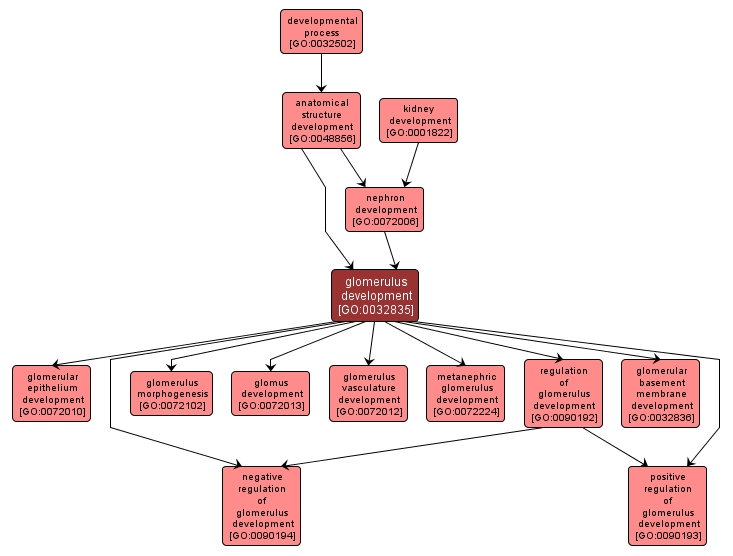| Desc: |
The progression of the glomerulus over time from its initial formation until its mature state. The glomerulus is a capillary tuft which forms a close network with the visceral epithelium (podocytes) and the mesangium to form the filtration barrier and is surrounded by Bowman's capsule in nephrons of the vertebrate kidney. |














